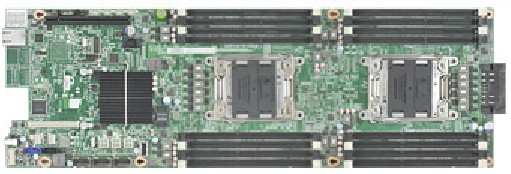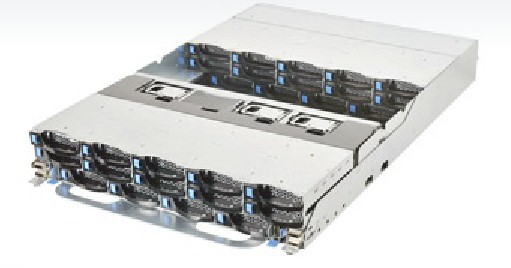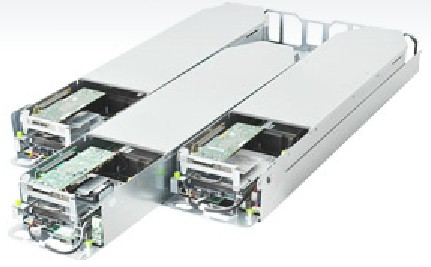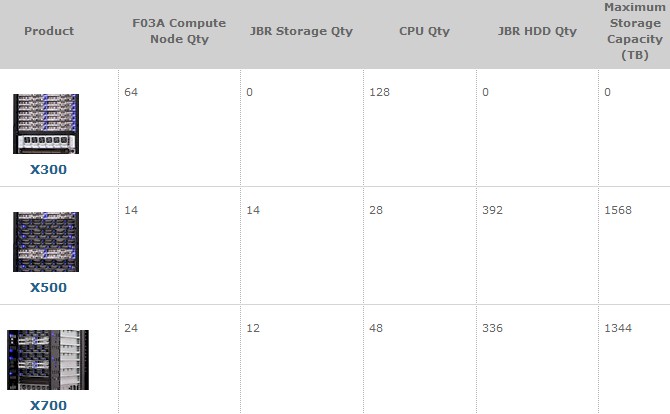Quanta QCT Peddling Open Compute Servers in North America

Enterprises that are looking to deploy servers and racks based on the Open Compute Project's designs have a new option now that Quanta QCT is ready to sell iron in North America.
Quanta Computer is one of the largest manufacturers of laptops in the world, and actually makes many of the machines that end up with other popular brands on them. The company is also one of the largest original design manufacturers (ODMs) for datacenter gear, and has become one of the largest server makers as gauged by the number of motherboards and systems it sells. (Approximately one in seven servers sold in the world in the past several years have a Quanta motherboard in them.) Quanta has expanded into storage arrays, switches, and racks, too, as all system makers have had to do.
Quanta QCT is the server and storage sales arm of the $34 billion Taiwanese tech giant that is its parent, and in May 2012 Quanta QCT opened up operations in Freemont, California to start selling its custom systems to companies in North America. This week, Quanta QCT is rolling out servers, enclosures, and racks that are a variant of the Open Compute systems as well as a new switch to link them together. Companies in the United States and Canada can now buy these designs from Quanta QCT without having to have a formal engagement – usually based on a very high sales volumes – with Quanta Computer back in Taiwan.
"Our customers are on a continual quest for the most capital and operationally efficient datacenter designs," said Mike Yang, general manager of Quanta QCT, in a statement announcing the new machines. "The Open Compute Project is intended to address this need, and Rackgo X is the culmination of our long-term OCP design and development effort. Working with innovators like Facebook and Rackspace, Quanta has developed the most comprehensive lineup of OCP spec products available on the market."
Quanta joins Amax, Avnet, Hyve Solutions, Penguin Computing, and Rackline as official Open Compute solution providers. Quanta is one of the suppliers that will be making OCP-compliant machinery for cloud provider Rackspace Hosting, which also plans to buy gear from WiWynn, a spinoff of Taiwanese ODM Wistron, which had $23 billion in sales last year and is one of Quanta's rivals. Hyve Solutions is part of technology distributor and business process services giant Synnex, which had $10.3 billion in sales last year. Avnet is one of the largest IT and electronic component distributors in the world, with $25.5 billion in revenues last year. Amax is based on Fremont as well and is one of the old-time contract manufacturers for servers and storage. Racklive is a relative newbie established three years ago. And Penguin Computing is a long-time supplier of Linux-based supercomputers that is expanding out to clouds through embracing Open Compute designs.
The initial Rackgo X product is based on the Open Compute "Windmill" motherboard (PDF). The Quanta variant is called the Windmill F03, and it is a half-width, two-socket board that can use either the first or second generations of Intel's Xeon E5-2600 processors. The Windmill design has eight memory slots per socket, plus one PCI-Express 3.0 x16 slot, one PCI-Express 3.0 x8 mezzanine slot, and two miniSAS ports coming off the PCI-Express bus. The design allows for different numbers of SATA ports for hooking up disk and flash drives, but the Quanta variant has three miniSAS and two SATA connectors hanging off the Intel "Patsburg" C602 chipset.
There are two Quanta machines that make use of this Windmill system board.
The F03A system puts four of these boards into a chassis that is four Open Compute rack units (abbreviated OpenU or OU in the Open Compute lingo) high. A normal server is 19 inches wide and the height of the server is incremented in 1.75-inch rack units. Open Compute, which was started by Facebook, wanted to make better use of space and make the server size fit the components rather than the other way around. And so it leaves less space on the sides of servers in its Open Rack and makes servers 21 inches wide. This allows for five 3.5-inch disks or three half-width servers to be placed on a shelf in the rack. The OpenU is 1.89 inches instead of 1.75 inches.
The F03A chassis is designed to cram the most compute capacity as possible into the smallest space. Each node in the machine has room for four 2.5-inch drives (either disk or solid state).
The F03C machine is two OpenUs high and has three nodes, and is designed to have room for fatter peripheral cards such as Fusion-io flash or Mellanox Technologies dual-port InfiniBand adapters, which take up more vertical room that is available in the F03A system. This machine, says Quanta, is aimed at web hosting, database, and "mission-critical" workloads. (Precisely what Quanta means by mission critical is not clear.) Each node in this machine comes with one 3.5-inch drive, either a SAS or SATA disk.
Presumably, based on the naming scheme, there is an F03B system, but Quanta QCT did not mention it.
For a storage server, Quanta has created the JBR chassis, which has two SAS interface controller modules and two 6 Gb/sec mini-SAS ports per module. The storage array has room for 28 disk drives in 3.5-inch factors. It is not designed for absolute density, but to allow for any component to be replaced in under three minutes and to have enough airflow to keep cool..
Quanta QCT is offering three different setups of these machines in its Rackgo X enclosures, which adhere to the Open Rack standard put forth by Facebook and adopted by the Open Compute Project.
Here are the feeds and speeds of the Rackgo X racks with a mix of compute nodes and JBR storage nodes to meet different requirements:
The Rackgo X300 has two power shelves and 64 compute nodes, and packs 32 teraflops of floating point oomph into a rack that maxes out at 25 kilowatts.
The Rackgo X500, which is billed as being "great for OpenStack," has one power shelf, 15 compute nodes, and four storage arrays with a total of 420 3.5-inch disk drives weighing in at 4 TB for 1.68 PB of disk capacity.
The Rackgo X700 is a little lighter on the disk and heavier on the compute, and Quanta says it is aimed at clouds, object storage, and Hadoop. It has 24 nodes and 336 disks for a total of 1.34 PB of capacity, and with 14 drives per processor, this is about the right balance for Hadoop, which likes to have one core paired with one disk. That leaves some hot spare disks in the enclosure as well, even if companies decide to deploy the new top-bin, twelve-core Xeon E5-2600 v2 processors from Intel on the compute nodes.
Pricing for all of this machinery was not available at press time.














